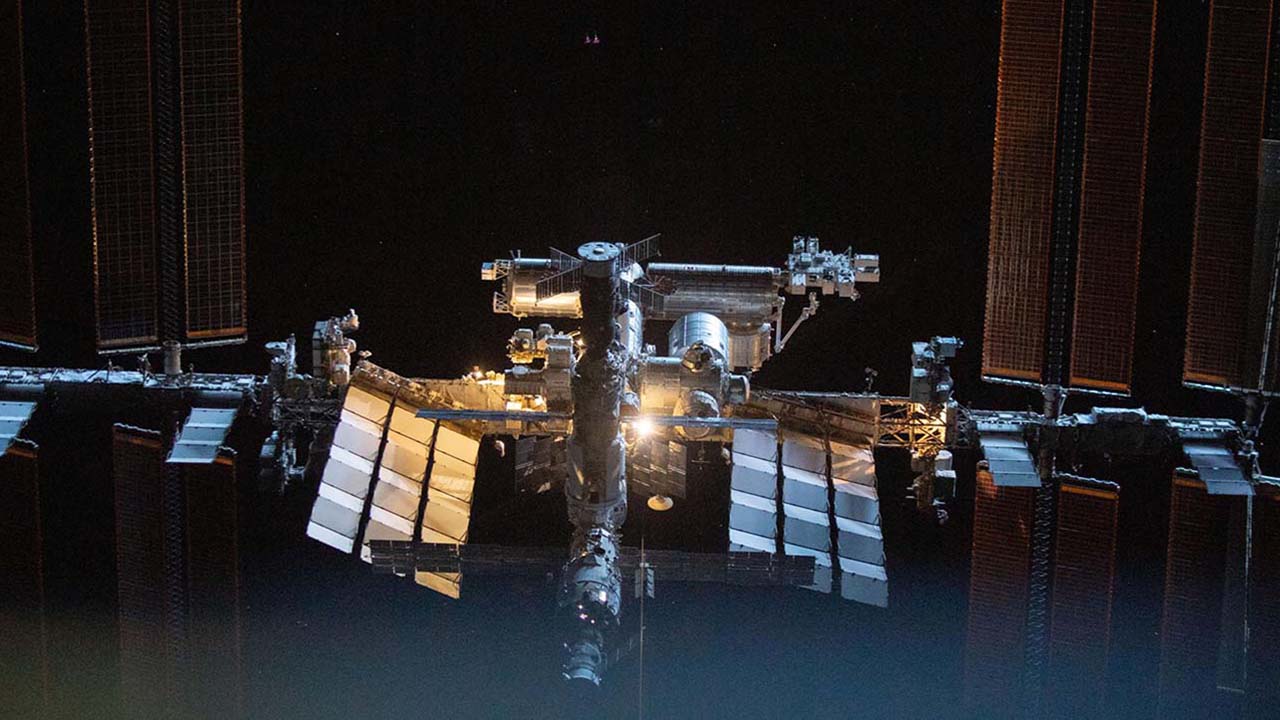KENNEDY SPACE CENTER (FL), June 8, 2023 – In recent years, the world has focused on shifting away from fossil fuels, with the goal of using renewable energy sources as the future means of powering the globe. Currently, 22% of global energy production comes from various renewable energy sources, like photovoltaic devices, which are a fast-growing contributor to solar energy solutions. To create more energy-efficient photovoltaic devices, researchers are turning to the International Space Station (ISS) National Laboratory, and the results could improve how we power the globe.
Researchers from Stanford University sent an investigation to the space station on SpaceX’s 28th Commercial Resupply Services (CRS) mission. The project aims to leverage microgravity to improve the synthesis of materials for photovoltaic devices designed to convert sunlight into electricity for solar energy applications. The team will anneal copper indium sulfide (CuInS2) semiconductor crystals in space in an effort to reduce defects that commonly occur in crystal production on Earth. Higher-quality CuInS2 crystals would enable the development of photovoltaic devices that are more efficient.
“By doing the annealing process in microgravity, we hope to create more uniform crystals that have an even electrical conductivity,” said Jessica Frick, a research engineer at Stanford University.
Copper indium sulfide crystals were sent to space as part of a research investigation to make more energy-efficient photovoltaic devices.
Media Credit: Image courtesy of Stanford University
According to Frick, this uniformity is key to making more efficient solar cell products. “If there are defects in the crystals or if there is an inhomogeneous spread of defects, it’s going to affect electron transfer, which affects how well solar energy is transferred to electrical energy.”
In solar cells, light from the sun is collected and transformed into electrical energy that can power an array of devices. For that to happen, electrons travel through a circuit with the help of semiconductors. Frick says that if there are impurities or an uneven concentration of impurities in semiconductor crystals, you can get areas of electrical resistance and areas of fast connection.
Producing semiconductor crystals in space could help solve this problem because the gravity-driven forces that contribute to crystal impurities on Earth are removed. For their investigation, Frick and her team are sending CuInS2 crystals to the space station, where they will be heated and cooled in a process called annealing. The crystals will be heated to approximately 400 degrees Celsius and then allowed to cool down before being sent back to Earth for analysis. The team hopes the space-based conditions will enable them to produce higher-quality crystals than what can be manufactured on Earth.
SpaceX CRS-28 launched to the International Space Station on June 5 at 11:47 a.m. EDT. This mission includes multiple ISS National Lab-sponsored payloads. To learn more about all ISS National Lab-sponsored research on this mission, please visit our launch page.
Download a high resolution image for this release: A Scanning Electron Microscope View of the Crystallites
Media Contact:
Patrick O’Neill
904-806-0035
[email protected]
# # #
About the International Space Station (ISS) National Laboratory: The International Space Station (ISS) is a one-of-a-kind laboratory that enables research and technology development not possible on Earth. As a public service enterprise, the ISS National Lab allows researchers to leverage this multiuser facility to improve life on Earth, mature space-based business models, advance science literacy in the future workforce, and expand a sustainable and scalable market in low Earth orbit. Through this orbiting national laboratory, research resources on the space station are available to support non-NASA science, technology and education initiatives from U.S. government agencies, academic institutions, and the private sector. The Center for the Advancement of Science in Space, Inc. (CASIS) manages the ISS National Lab, under Cooperative Agreement with NASA, facilitating access to its permanent microgravity research environment, a powerful vantage point in low Earth orbit, and the extreme and varied conditions of space. To learn more about the ISS National Lab, visit www.ISSNationalLab.org.
# # #







